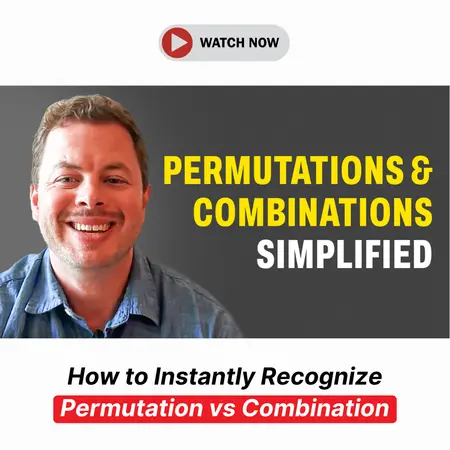Events & Promotions
|
|

GMAT Club Daily Prep
Thank you for using the timer - this advanced tool can estimate your performance and suggest more practice questions. We have subscribed you to Daily Prep Questions via email.
Customized
for You
Track
Your Progress
Practice
Pays
Not interested in getting valuable practice questions and articles delivered to your email? No problem, unsubscribe here.
- Nov 20
07:30 AM PST
-08:30 AM PST
Learn what truly sets the UC Riverside MBA apart and how it helps in your professional growth - Nov 22
11:00 AM IST
-01:00 PM IST
Do RC/MSR passages scare you? e-GMAT is conducting a masterclass to help you learn – Learn effective reading strategies Tackle difficult RC & MSR with confidence Excel in timed test environment - Nov 23
11:00 AM IST
-01:00 PM IST
Attend this free GMAT Algebra Webinar and learn how to master the most challenging Inequalities and Absolute Value problems with ease. - Nov 25
10:00 AM EST
-11:00 AM EST
Prefer video-based learning? The Target Test Prep OnDemand course is a one-of-a-kind video masterclass featuring 400 hours of lecture-style teaching by Scott Woodbury-Stewart, founder of Target Test Prep and one of the most accomplished GMAT instructors.
Kudos
Bookmarks
garimavyas
Evaluate the Argument by breaking it down into its components. For Boldface questions, the answer will be right there.
Consumer advocate: It is generally true, at least in this state, that lawyers who advertise a specific service charge less for that service than lawyers who do not advertise.
The advocate accepts this as true in most cases.
It is also true that each time restrictions on the advertising of legal services have been eliminated, the number of lawyers advertising their services has increased and legal costs to consumers have declined in consequence.
He also accepts this as true. Each time X happens, Y happens.
However, eliminating the state requirement that legal advertisements must specify fees for specific services would almost certainly increase rather than further reduce consumer’s legal costs.
He says that this principle will not hold in this case. This is a prediction. He predicts that we will have an exception here. This is his opinion. Hence this is the conclusion.
Lawyers would no longer have an incentive to lower their fees when they begin advertising and if no longer required to specify fee arrangements, many lawyers who now advertise would increase their fees.
He is using this to support his conclusion. Why is it that the principle will not hold in the case discussed above? He says, "Consider this: If fees is not required to be specified in the Ad, the lawyers will not have an incentive to lower their fees when they advertise, hence the ones who advertise will also increase their fees"
Hence (C) works.
(C) The first is pattern of cause and effect that the consumer advocate predicts will not hold in the case at issue; the second offers a consideration in support of that prediction.
It is a pattern of cause and effect that he says will not hold in this particular case.
He makes a prediction and uses teh second BF as a consideration to support his prediction.
Answer (C)
Kudos
Bookmarks
Hello from the GMAT Club VerbalBot!
Thanks to another GMAT Club member, I have just discovered this valuable topic, yet it had no discussion for over a year. I am now bumping it up - doing my job. I think you may find it valuable (esp those replies with Kudos).
Want to see all other topics I dig out? Follow me (click follow button on profile). You will receive a summary of all topics I bump in your profile area as well as via email.
Thanks to another GMAT Club member, I have just discovered this valuable topic, yet it had no discussion for over a year. I am now bumping it up - doing my job. I think you may find it valuable (esp those replies with Kudos).
Want to see all other topics I dig out? Follow me (click follow button on profile). You will receive a summary of all topics I bump in your profile area as well as via email.
Moderators:
189 posts






